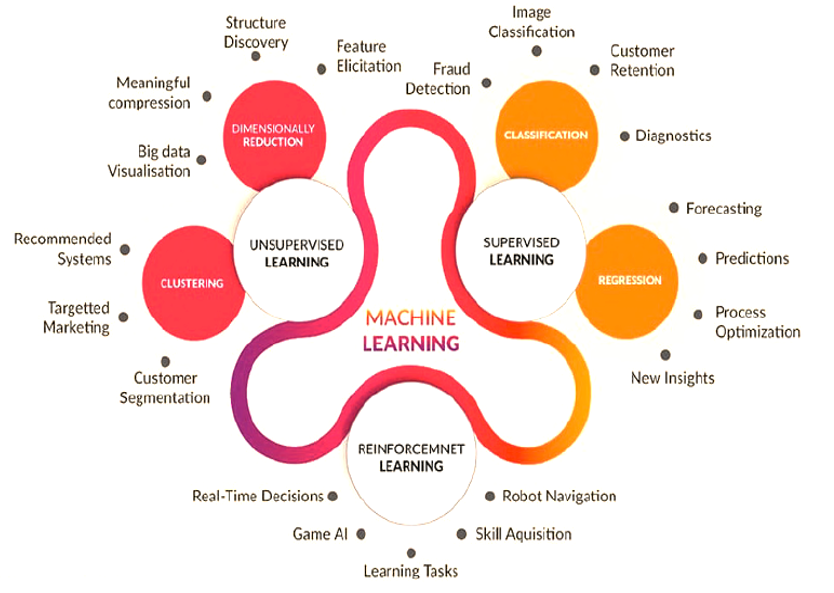In iToBoS, machine learning/ artificial intelligence is key to combine all the design and make the system really a standout product.
Before going into nitty gritty of the project, we introduce some machine learning concepts here. Without the use of technical jargon, it should be easy enough for a technologist to understand and gain fundamental knowledge. According to dermatologists, melanoma can be detected with an absolute accuracy of 75-84% based on their visual screening of the skin images. Machine learning has a huge potential to automate diagnostic systems and it can give doctors a shot in the arm. Detecting skin cancer using dermoscopy images can be achieved by improving deep learning capabilities. Classifying skin cancer lesions using specialized convolutional neural networks could help the medical community detect and potentially treat the disease in its early stages.
Overview
Nowadays, machine learning is a heavily researched and focused field around the globe. There is a variety of applications, such as in industry, medicine, and IT. Machine learning is an application of artificial intelligence (AI), which provides a system that allows learning and improving without explicit programming.

Overview of machine learning
Supervised learning
An algorithm group that requires a pair of input-output data. For each pair of data, we take a sample of data used to make estimates and expected results as labels. Supervised is a word derived from the fact that human auditors must assign labels to data. During training, the model is fed with samples repeatedly. As for each sample, the model extracts the current status parameters and provides estimates. A difference between prediction tags is referred to as an error. Mistakes provide feedback on how to reduce errors in future forecasts. As a result, the model changes its parameters based on the algorithm from which it was derived. Supervised learning model tries to find for parameter values that enable it to achieve good results in historical data. They are then used to predict unknown data that is not part of the training set.
Supervised learning can solve two main problems of classification and regression. Classification categorizes input data instances. An example of use is to estimate if someone is sick, identifying false transactions, and identifying facial recognition. Regression estimates continuous numerical values for input data samples. Example of uses are house price valuation, food demand estimation or temperature estimation.
Un-supervised learning
A set of algorithms analyses unlabelled data without referring to known or marked results. No right answer exists for unsupervised learning. It is possible to explore unknown data structures and models using models based on this algorithm; a set of algorithms that attempts to extract conclusions from unlabelled data (without referring to known or marked results). There is no right answer for unsupervised learning. Models based on this algorithm can be used to explore unknown data models and data structures. Unsupervised learning can solve two main problems of clustering and dimensionality reduction.
Clustering ensures that objects in different groups are not identical by assigning them to homogeneous groups (called clusters). The aim of clustering is to discover hidden objects by defining their structure. Dimensional reduction is very useful for high-dimensional data. This process aims to reduce the number of functions considered as part of a dimension that represents an object. With more features, data becomes scarce and analysis is corrupted by dimensionality. Using smaller datasets is easier
Reinforcement Learning
Reinforcement Learning (RL) is a type of machine learning technique that uses feedback to help activists learn through actions and experiences. Both supervised and reinforced learning use mapping between input and output. However, unlike supervised learning, in which the feedback representative receives a set of corrective actions, reinforcing learning uses appreciation and punishment as a sign of positive and negative behaviour.
As opposed to unsupervised learning, reinforcement learning has different objectives. Compared with unsupervised learning, enhanced learning aims to find a model of action that maximizes the total cumulative reward of the model. Algorithms for Reinforcement Learning are numerous. The best action is determined by the current state of the results in Reinforcement Learning.
References:
- Shalev-Shwartz, S., & Ben-David, S. (2021). Understanding machine learning: From theory toalgorithms. Cambridge University Press.
- Osisanwo, Akinsola, Awodele, Hinmikaiye, Olakanmi, & Akinjobi. (2017). Supervised machine learning algorithms: Classification and comparison. International Journal of Computer Trends and Technology, 48(3), 128–138. https://doi.org/10.14445/22312803/ijctt-v48p126
- Usama, M., Qadir, J., Raza, A., Arif, H., Yau, K.-lim A., Elkhatib, Y., Hussain, A., & Al-Fuqaha, A. (2019). Unsupervised machine learning for networking: Techniques, applications and research challenges. IEEE Access, 7, 65579–65615. https://doi.org/10.1109/access.2019.291664
